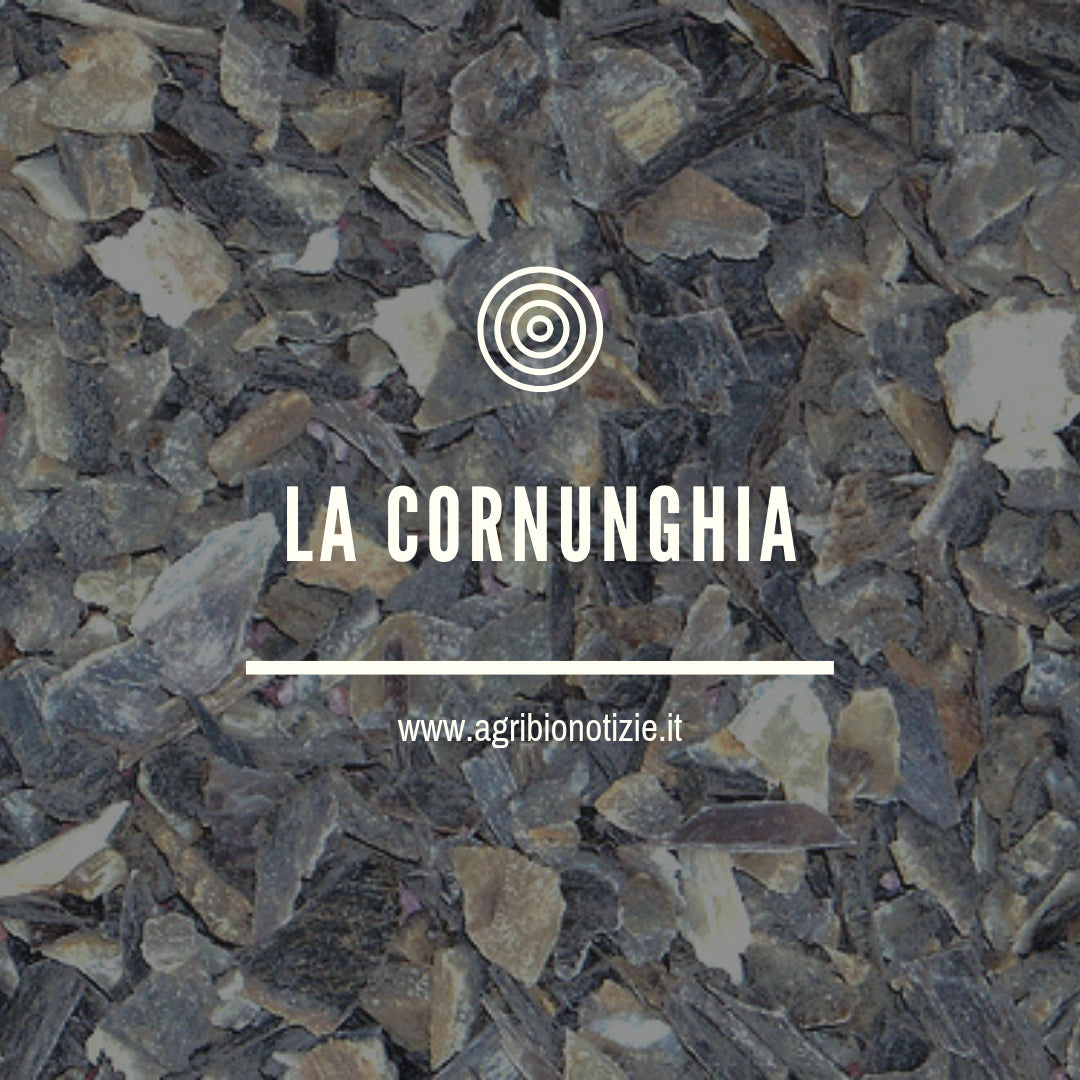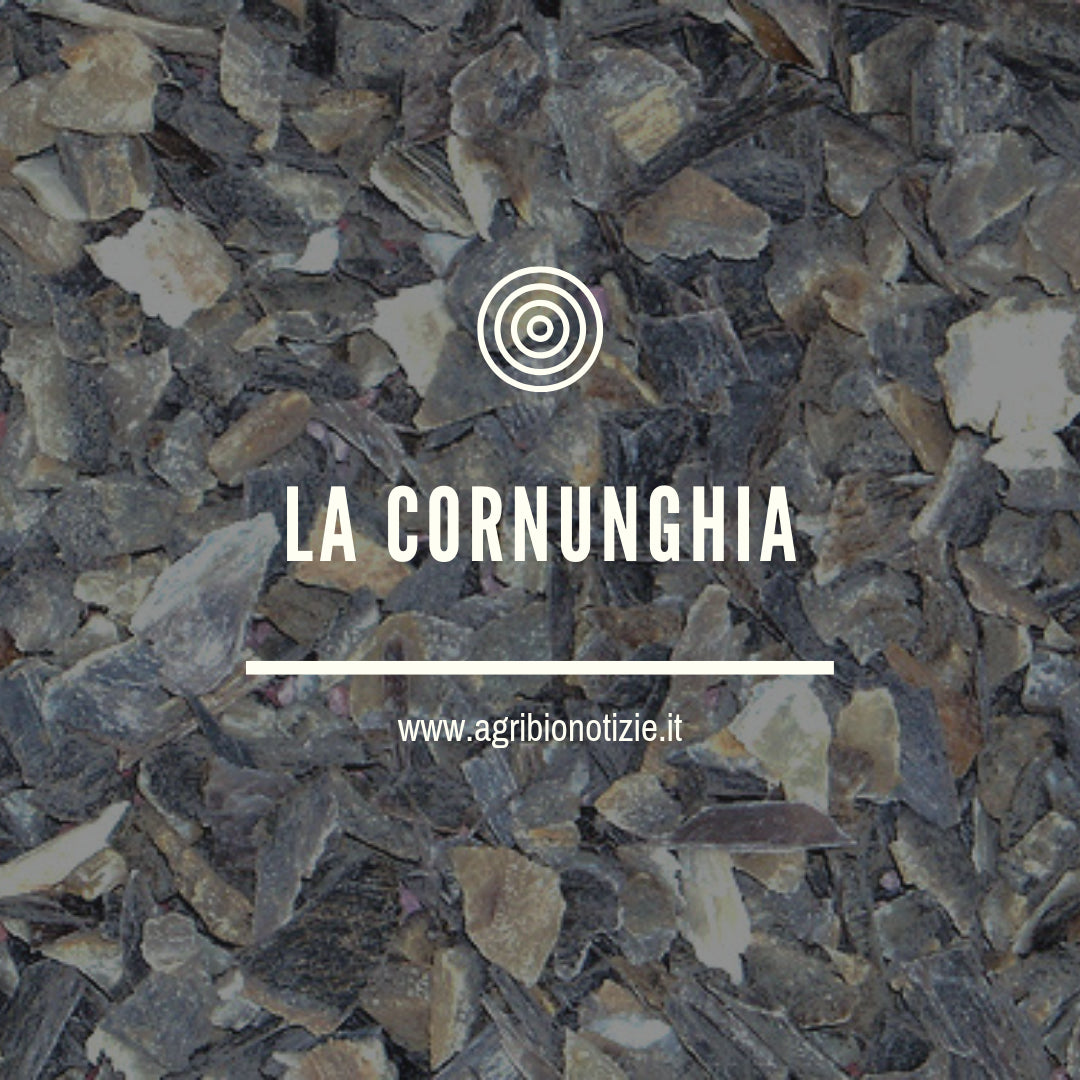CORNUNGHIA
Have a question?

CORNUNGHIA
Dettagli
CORNUNGHIA
ALLOWED IN ORGANIC AGRICULTURE
ORGANIC FERTILIZER OF ANIMAL ORIGIN PRODUCED BY GRINDING ANIMAL HORNS AND HOOMS.-
COMPOSITION:
Organic nitrogen (N): 13-14%
GENERAL CHARACTERISTICS:
The characteristics of the CORNUNGHIA are multiple; in fact, in addition to providing a high percentage of organic nitrogen, it releases it slowly and, therefore, being a slow-release fertilizer, it supports cultivation throughout the entire vegetative cycle; being a hydroscopic product, it retains humidity and then releases it gradually in periods of lack of rain and persistent drought; in addition to these prerogatives, CORNUNGHIA is also an excellent color fixer and, for this reason, it is used in cultivation of varieties of flowers and in ornamental lawns.-
It significantly increases the micro-flora and micro-fauna of the soil
reforming the humus and consequently making the soil very soft, favoring the aeration of the root system.-
PACKAGING:
THE CORNUNGHIA
A fundamental component of CORNUNGHIA is keratin (constituent of hair, nails, etc.), a substance chemically very similar to albumin, of which it has approximately the centesimal composition, with the exception of sulfur which is included in very variable percentages ( from 0.7 to 5); the other elements appear approximately in these percentages:
Carbon 50%
Hydrogen 7%
Nitrogen 18%
Oxygen 22%
Practically the nitrogen of CORNUNGHIA does not exceed 16% and decreases up to 13% with the increase in the degrees of refinement and therefore the impurities.-
In the presence of water, the granular CORNUNGHIA swells considerably, then macerates, leaving holes and cavities in the soil which make it aerated and singularly more suitable for root respiration and oxygenation processes.-
Through the work of nitrifying bacteria in the soil, keratin gives rise to doubling processes and subsequently to ammonia and carbon dioxide; ammonia is easily retained by the soil which has a high absorbent power for it, then nitrifi es and assimilated by plants; since carbon dioxide does not find a free outlet in the ground, it exerts pressure on the menisci and walls of the internal spaces, causing them to widen; the soil rises, as they say, swells and becomes porous similar to bread dough, it becomes more suitable for gaseous exchanges and in general for plant life; from this point of view the CORNUNGHIA participates in that warming action of the soil typical of all organic manure fertilizations to the highest degree.-
On the nitrification capacity of CORNUNGHIA, the studies by Munz and Girard would demonstrate that the horn has a nitrification speed that is a little faster than that of cow manure and less than half that of ammonium sulphate; however, we believe that in the soil the phenomenon can undergo deviations and is worthy of new studies. - However, it remains established that the CORNUNGHIA gradually releases its nitrogen to the plant without causing excessive herbaceous growth and functional imbalances; administered directly at sowing, in the preparatory work of the soil, it accompanies the plant through all vegetative stages, including the maturation of the seed; and it is the opinion of practitioners that it increases the yield compared to other fertilizers which cause luxuriant growth but which are exhausted too soon or are washed away by the water.-
Containing 50% carbon, CORNUNGHIA also greatly favors bacterial life, offering the carbonated material that atmospheric nitrogen-fixing bacteria process for the generation of nitrates.-
It does not give rise to physiological reactions that tend to increase the acidity of the soil; this explains why it is usefully used - with the addition of lime - in tired or acidic soils due to long submersions, for which the use of certain fertilizers - ammonium sulphate - would be very harmful.-
Combined with other substances (superphosphates, chlorides, sulphates) it does not cause mass heating or internal reactions that cause losses or degeneration; it is therefore ideally suited to being used in combination.
As regards the proportions to be used, it is our opinion that on a case-by-case basis, depending on the nature of the soil and the cultivation methods, the intelligent farmer must vary the quantities of fertilizers used; we therefore confess our lack of sympathy for the formulas made; depending on the conditions in which the previous crop leaves the ground, there is a whole series of different cases that deserve to be examined individually before establishing the quality and quantity of fertilizations - it will be enough to mention here how the CORNUNGHIA is mostly used in reason of kg. 200 – 250 per hectare.-
CORNUNGHIA
DATA SHEET
Cornunghia is a fertilizer allowed in organic farming pursuant to the Circ. MiPAF n.8 of 13.09.99 (Reg. EEC 2092/91; 2381/94; EC 1488/97; 1073/00)
TITLES
-
14% organic nitrogen (N).
-
40% Organic Carbon (C) of biological origin
-
80% Organic matter
|
CONTAINED IN FERTILIZING ELEMENTS |
||
|
ANALYSIS DESCRIPTION |
RESULT |
MEASUREMENT UNIT |
|
Total Nitrogen as N |
15.2 |
% |
|
Organic Nitrogen |
14.8 |
% |
|
Nitric Nitrogen as N |
<LD |
% |
|
Ammonia nitrogen as N |
0.16 |
% |
|
Urea Nitrogen |
0.04 |
% |
|
Total Phosphoric Dioxide as P2O5 |
0.285 |
% |
|
Potassium oxide soluble in water like K2O |
0.145 |
% |
|
pH |
6.88 |
unit |
|
Content in water |
11.0 |
% |
|
Humified Organic Carbon as C |
0.76 |
% |
|
Organic Carbon as C |
47.4 |
% |
|
Copper as Cu |
15.8 |
mg/kg |
|
Zinc as Zn |
33.8 |
mg/kg |
|
Football like Ca |
0.221 |
% |
|
Iron as Fe |
0.196 |
% |
|
Magnesium as Mg |
346 |
mg/kg |
|
Boron as B |
11.9 |
mg/kg |
|
Humic Acids |
1.31 |
% |
|
Phosphoric dioxide soluble in water such as P2O5 |
0.126 |
% |
|
Phosphoric dioxide soluble in water and neutral ammonium citrate such as P2O5 |
0.239 |
% |
|
Sulfur dioxide soluble in water as SO3 |
0.07 |
% |


